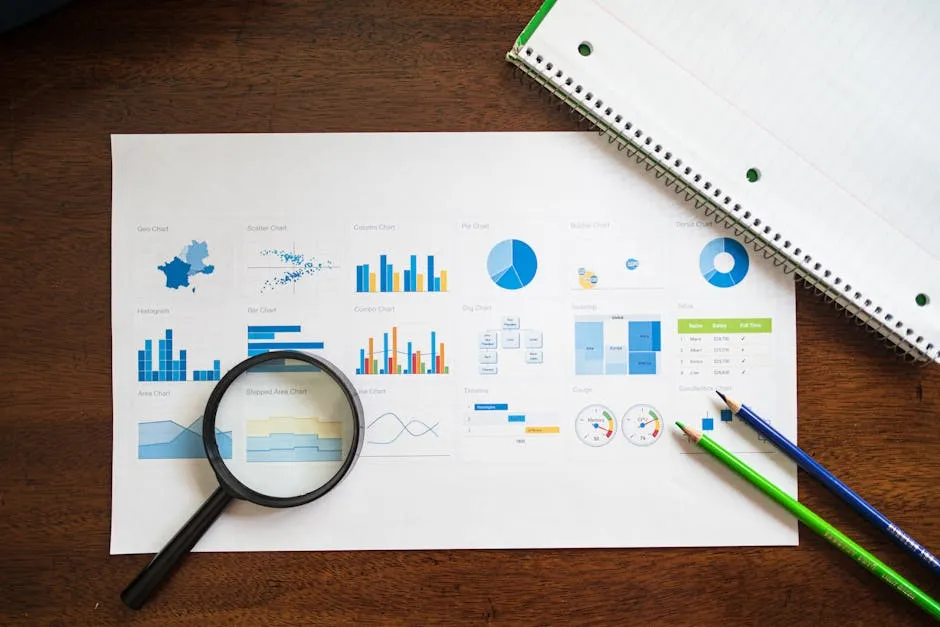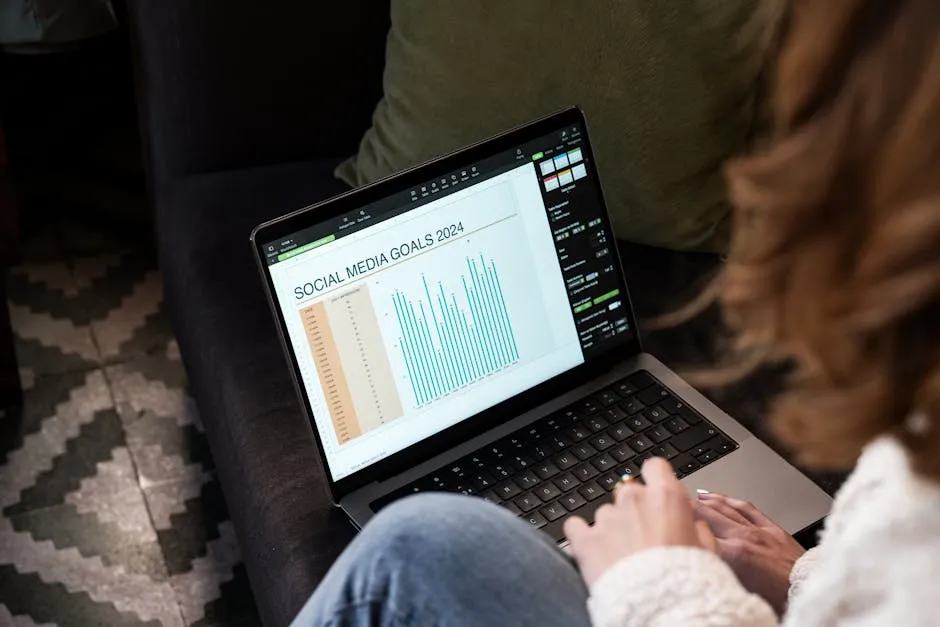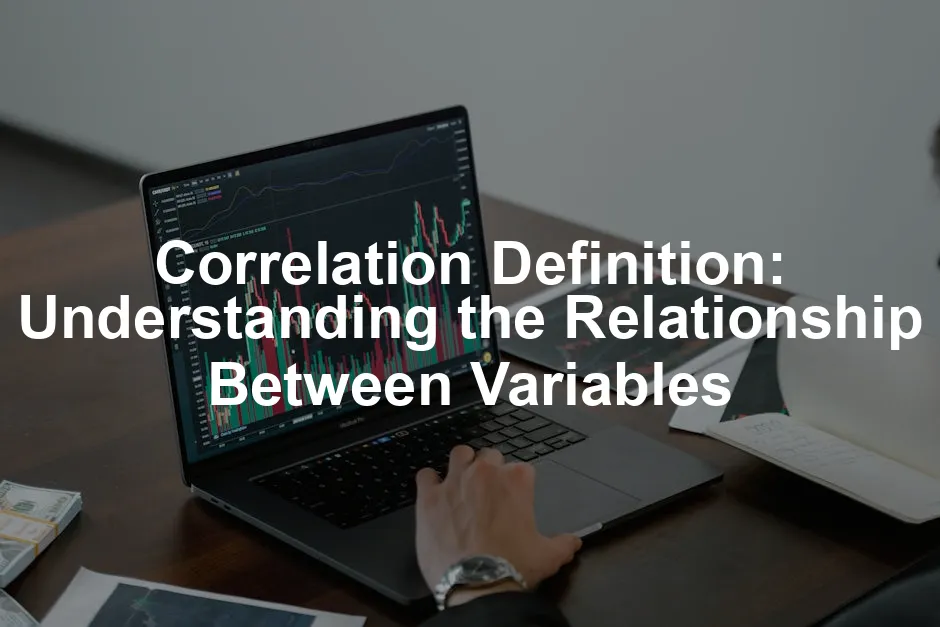Introduction
Have you ever noticed how some things seem to change together? That’s correlation at work! In statistics, correlation measures the relationship between two or more variables. It’s crucial in fields like science, finance, and social studies. Understanding this concept helps analysts and researchers make sense of data. However, remember: correlation does not imply causation. Just because two variables are related doesn’t mean one causes the other.

Understanding correlation is essential for effective data analysis. correlation
Summary and Overview
Correlation is a statistical term that describes the relationship between two variables. It indicates how much one variable changes when the other does. This relationship can be positive, negative, or zero. The correlation coefficient quantifies this relationship, ranging from -1 to +1. A positive correlation means both variables increase together, while a negative correlation indicates one decreases as the other increases. Recognizing these differences is vital for accurate data analysis. Correlation finds applications in many real-life scenarios, such as predicting market trends or assessing health risks.

If you’re looking for a comprehensive guide to understanding these concepts, check out Statistical Analysis with Excel For Dummies. This book breaks down complex concepts into digestible pieces, making it a perfect companion for anyone diving into data analysis.
What is Correlation?
Correlation refers to the statistical relationship between two variables. When we say variables are correlated, we mean their values tend to move together. Statistically, this is often measured by the correlation coefficient, denoted as “r.” The value of “r” ranges from -1 to +1. A positive value shows that as one variable increases, the other does too. Conversely, a negative value indicates that as one variable increases, the other decreases.
Understanding correlation is essential for data analysis. It helps identify patterns and relationships in datasets. However, many people mistakenly believe correlation implies causation. Just because two variables are correlated does not mean one causes the other. For example, ice cream sales and drowning incidents may show a strong correlation, but both are influenced by a third factor: summer heat.

Types of Correlation
Positive Correlation
Positive correlation occurs when two variables increase together. For example, consider education and income. Generally, as education levels rise, so do income levels. This direct correlation illustrates how improvements in one area can lead to benefits in another.
For a deeper understanding of how data can be analyzed for business contexts, you might enjoy Data Science for Business: What You Need to Know about Data Mining and Data-Analytic Thinking. This book provides insights into how data science can drive business decisions.

Negative Correlation
Negative correlation describes a relationship where one variable decreases as the other increases. This inverse relationship can be observed in various scenarios. For instance, consider the connection between exercise frequency and body weight. Generally, as people exercise more, their body weight tends to decrease. This demonstrates how two variables can move in opposite directions.
Another example is the relationship between the amount of time spent on social media and productivity levels. As social media usage increases, productivity often declines. These situations illustrate how negative correlation can provide insights into behavioral patterns and help guide decision-making.

No Correlation
No correlation occurs when two variables don’t show any relationship. Essentially, changes in one variable have no predictable effect on the other. For example, consider shoe size and intelligence; these two variables are independent of each other. As shoe size increases, intelligence does not necessarily change.
Another example is the relationship between the number of pets owned and a person’s favorite color. These independent variables display no association. Recognizing no correlation can help avoid misleading conclusions when analyzing data.

Curvilinear Correlation
Curvilinear correlation refers to non-linear relationships between variables. Unlike linear correlations, where changes are consistent, curvilinear correlations show that the relationship varies at different levels. For example, consider the relationship between stress and performance. Initially, increased stress may boost performance, but after a certain point, too much stress can hinder it.
Visual representations, like U-shaped curves, help illustrate this complexity. Curvilinear correlations remind us that relationships can be nuanced and require careful analysis to understand fully. Recognizing these patterns can enhance data interpretation and improve decision-making in various fields.

Measuring Correlation
Correlation Coefficient
The correlation coefficient is a crucial statistical measure that quantifies the strength and direction of a relationship between two variables. It varies between -1 and +1. A value of +1 indicates a perfect positive correlation, while -1 signifies a perfect negative correlation. A value of 0 indicates no linear correlation.
Two common types of correlation coefficients are Pearson and Spearman. The Pearson correlation coefficient measures linear relationships, while the Spearman correlation is used for ranked data or non-linear relationships. For a comprehensive understanding, you can refer to our guide on correlation coefficient.

To visualize these relationships accurately, having the right tools is crucial. A reliable Graphing Calculator can help you plot and analyze data points effectively, making complex calculations a breeze.
Visualizing Correlation
Scatter plots are powerful tools for visualizing correlation. They display two variables on a graph, allowing you to see their relationship at a glance. Each point represents a data pair, with one variable on the x-axis and the other on the y-axis. This visual representation is essential for analyzing trends.
Interpreting scatter plots is straightforward. If the points cluster closely around a line, a strong correlation exists. A positive slope indicates a positive correlation, while a negative slope shows a negative correlation. If the points are spread out without a clear pattern, there’s little to no correlation. Understanding scatter plots enhances your data visualization skills and helps you draw meaningful conclusions from your analyses.

Applications of Correlation
Correlation has wide-ranging applications in various fields. In finance, it helps analysts assess how stocks move relative to one another. For example, when considering a diversified portfolio, investors look for assets with low correlation to reduce risk.

In healthcare, correlation aids in identifying relationships between lifestyle choices and health outcomes. Researchers often study the correlation between diet and disease prevalence to improve public health strategies. For a deeper dive into this topic, check out our post on best statistical techniques from university of minnesota for healthcare applications.
If you’re interested in diving deeper into the world of statistics, consider reading The Art of Statistics: Learning from Data. This book teaches you how to think statistically and make sense of data in a meaningful way.
Social sciences also utilize correlation to explore behavioral patterns. For instance, studies may analyze the correlation between education levels and income, informing policy decisions.
Overall, correlation is crucial for predictive analytics, guiding data-driven decisions across industries. Recognizing these relationships allows professionals to make informed predictions and tailor strategies effectively.

Limitations of Correlation
Despite its usefulness, correlation has limitations. One major pitfall is the common misconception that correlation implies causation. Just because two variables show a relationship doesn’t mean one directly causes the other.
Another limitation involves interpretation challenges. Correlation coefficients can be affected by outliers or misleading data. It’s essential to consider external factors that may influence the observed relationship. For example, a correlation between ice cream sales and drowning incidents doesn’t mean one causes the other; both could be linked to hot weather. Understanding these nuances is vital for effective data interpretation.

If you’re looking to enhance your data analysis skills, consider using tools like Statistical Software (like SPSS or R). These tools can help you perform complex analyses and visualize your data effectively.

Conclusion
Understanding correlation is essential in many fields. It helps us to analyze how variables relate to one another. Remember, correlation shows the strength and direction of relationships. However, it does not confirm that one variable causes changes in another. By grasping these concepts, you can improve your data analysis skills and make more informed decisions. Use this knowledge in your everyday analysis and discussions. The more you apply it, the better you’ll understand the underlying relationships in your data.

FAQs
What is the difference between correlation and causation?
Correlation indicates a relationship between two variables, but it does not imply that one causes the other. For example, a positive correlation between ice cream sales and temperature does not mean buying ice cream causes higher temperatures. Other factors, like seasonal changes, influence both. Recognizing this distinction is crucial for accurate analysis.
How do you calculate a correlation coefficient?
To calculate the correlation coefficient, follow these steps: First, gather paired data for the two variables. Then, compute the means of both variables. Next, find the differences from the mean, multiply these differences, and sum them. Finally, divide by the product of the standard deviations of both variables. The formula for Pearson’s correlation is r = cov(X,Y)/(σ_X σ_Y).
Can correlation be negative?
Yes, correlation can be negative. This occurs when one variable increases while the other decreases. For instance, an increase in exercise often correlates with a decrease in body weight. Understanding negative correlations helps identify patterns that may lead to better decision-making in various contexts.
What are some common misconceptions about correlation?
Many people mistakenly believe that correlation implies causation. Just because two variables change together does not mean one causes the other. For example, higher ice cream sales and increased drowning incidents might correlate, but both are influenced by warmer weather. Another misconception is that a strong correlation always indicates a meaningful relationship. However, correlations can arise from random chance or external factors. It’s crucial to analyze the context and underlying variables before drawing conclusions about relationships between data.
How is correlation used in real-life situations?
Correlation appears in various daily scenarios. For instance, businesses often analyze sales data against marketing expenditures. They may find a positive correlation: as spending on ads increases, sales often rise. Similarly, educators might study the correlation between study hours and test scores. Generally, more study time leads to better performance. In healthcare, researchers might explore the correlation between exercise frequency and overall health, revealing that increased physical activity correlates with lower health risks. These examples highlight the practical applications of correlation in decision-making.
What statistical tools can be used to measure correlation?
Several tools exist for measuring correlation efficiently. Excel is a popular choice, offering built-in functions like CORREL to calculate correlation coefficients. Statistical software like R and Python’s Pandas library also provides robust methods for analyzing correlations. SPSS and SAS are commonly used in academic research for more complex analyses. These tools help researchers visualize relationships through scatter plots and calculate correlation coefficients, making it easier to interpret data. Utilizing these tools enhances accuracy and insight in correlation analysis.
Why is correlation important in research?
Correlation plays a vital role in research across various fields. It helps identify relationships between variables, guiding hypotheses and further investigations. For example, in social sciences, researchers examine correlations to uncover behavioral patterns that inform policy decisions. In healthcare, understanding correlations between lifestyle choices and health outcomes can lead to better public health strategies. By recognizing significant correlations, researchers can prioritize areas for deeper exploration, ultimately advancing knowledge and fostering informed decision-making. Correlation thus serves as a foundational tool for effective research analysis.
Please let us know what you think about our content by leaving a comment down below!
Thank you for reading till here 🙂
All images from Pexels




